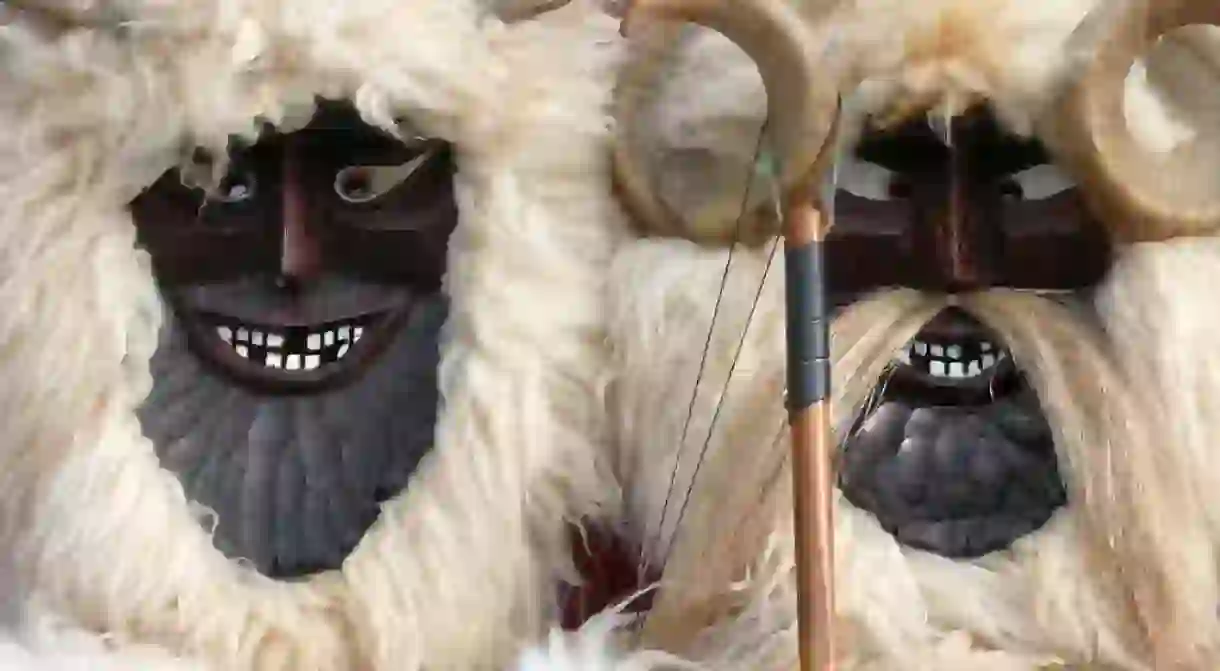How to Celebrate Hungarian Farsang Like a Local

Literally meaning ‘carnival’ in Hungarian, Farsang (far-shong) is a period of festivities post-Christmas through to February, with some unique Hungarian traditions that really are worth seeing.
What is Farsang?
Historically, Farsang held a significant role in Hungarian culture, over time blending elements of pagan celebrations about expunging wintry demons from the world with more typical Christian elements. As a result, it’s a hodgepodge of festivities, beginning shortly after the New Year.
The celebrations last over a month and were once typified by numerous grand feasts and copious drinking, largely in part due to the farmers of the land having a little more free time while the ground was frozen solid. Nowadays it’s not quite the grand occasion it once was, but there are still a number of events to get involved with. Everything kicks off from the day of Epiphany, or 6 January, when the Christmas trees are traditionally thrown out. Here’s what you’ll need to know if you want to take part…

Farsang parties
Running from 6 January through to February, Farsang is hard to define to any one particular event. As such, a number of parties are hosted throughout the period to get people warmed up ready for spring. Historically, these celebrations were about the loosening of morals, which meant a lot of raucous activities that ultimately led to a few babies being conceived. It really was a period of no-rules! Nowadays things are a little more controlled and orderly, but that doesn’t stop the major towns and cities from hosting their own Farsang parties. In Budapest, you’ll find numerous events taking place at the hottest clubs throughout the city across the month. These typically come with costume themes, which could be anything from outer space to The Great Gatsby.

Farsang doughnuts
In addition to the copious amounts of meats and vegetables eaten during Farsang as part of the feasting, there is also these Farsang-exclusive sweet treats, officially called Szalagos Farsangi Fánk (Ribboned Carnival Doughnuts) these fried cakes are typically enjoyed throughout the celebrations. They’re cooked in shallow oil and flipped, creating a lighter band or ribbon around the middle of the doughnut that gives the cake its name.
The hole of the doughnut is pressed in before it’s cooked, then filled with cream or apricot jam and dusted with icing sugar. They’re not quite as sweet as freshly baked sugar-coated doughnuts, but still a delicious treat that are ideal to enjoy in winter. There’s even a festival at the start of February devoted to Farsang Doughnuts, so there’s no excuse to miss out.

Fat Thursday
Where some cultures celebrate Shrove Tuesday or Mardi Gras (Fat Tuesday), Hungary instead celebrates Torkos Csütörtök – a day for consuming excess amounts of food. Traditionally this was the Thursday before Lent, but nowadays it’s more commonly celebrated the day after Ash Wednesday. Budapest, as well as many other Hungarian cities, has a number of restaurants taking part in the annual event, offering half-price meals and giving everyone the chance to stuff their faces in the name of celebration!

Busójárás in Mohács
Perhaps the most unique tradition as part of Farsang is the busójárás, a series of events hosted in Mohács – a town close to Croatian border – intended to scare away the demons of winter. It’s so original, in fact, that it’s even registered by UNESCO as an intangible cultural heritage.
There are a number of key points to the festivities, from music to parades and, of course, copious amounts of food. The most recognisable aspect of the week are the Busó – men who dress up in large woollen coats and painted wooden masks and arrive on rowboats from the river.
The history of this supposedly comes from a Turk invasion, when they occupied the town and chased its inhabitants out into the nearby swamps. However, the local men dressed up as these busó and frightened the Turks, who insisted demons had attacked them. Nowadays they playfully chase people around the town during their parades, making loud noises and generally causing a ruckus. There are mask-making events, competitions for children’s costumes and numerous stalls sellling food and drink. On Shrove Tuesday there’s even a bonfire where the Farsang coffin is set alight – the coffin symbolising winter and, therefore, its end giving way to spring.
It’s such an original set of festivities that if you happen to be in Hungary during the winter months, then this is definitely worth making the fairly length trip from Budapest for.













